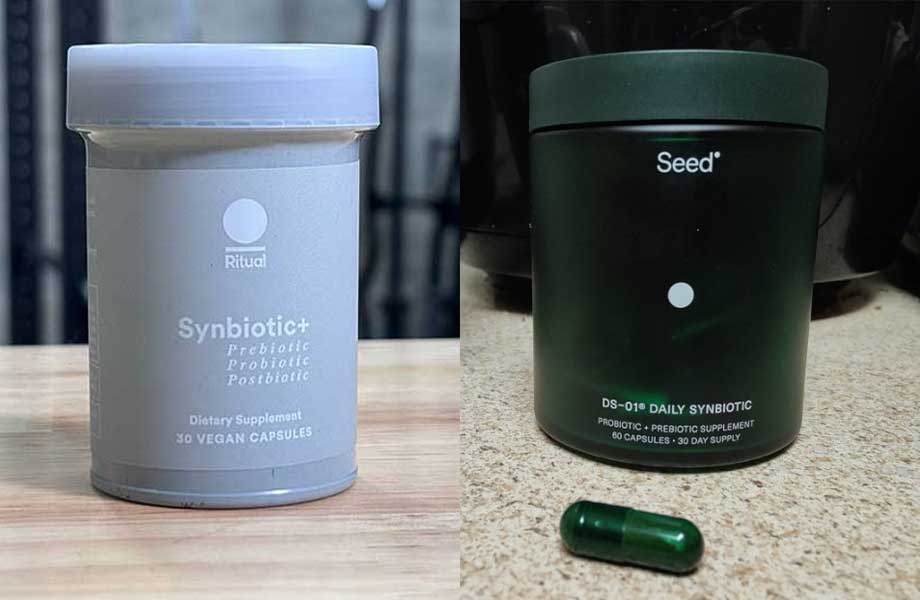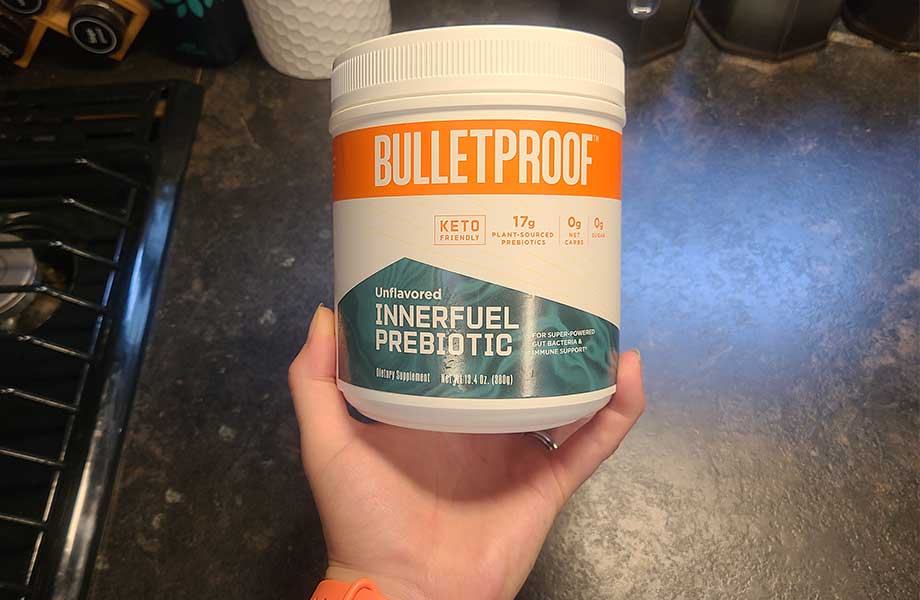If you’re searching for the best probiotic to boost your gut health and overall wellness, chances are you’ve stumbled upon Ritual and Seed. But these aren’t your typical probiotics—they’re synbiotics1, designed to fuel your digestive system with prebiotics (in both) and postbiotics (in Ritual).
Sure, flipping a coin might settle what’s for dinner (we’ve all been there), but it’s hardly the method for choosing a daily supplement. So, how do you decide between these two top contenders?
Enter this quick-tip comparison guide of Ritual Synbiotic vs Seed. As a registered dietitian, I’ll walk you through the key similarities and differences so you can confidently make an informed decision. Leave the coin flip for takeout—let’s dive in and find your potential match!
Ritual Synbiotic
Ritual Synbiotic+
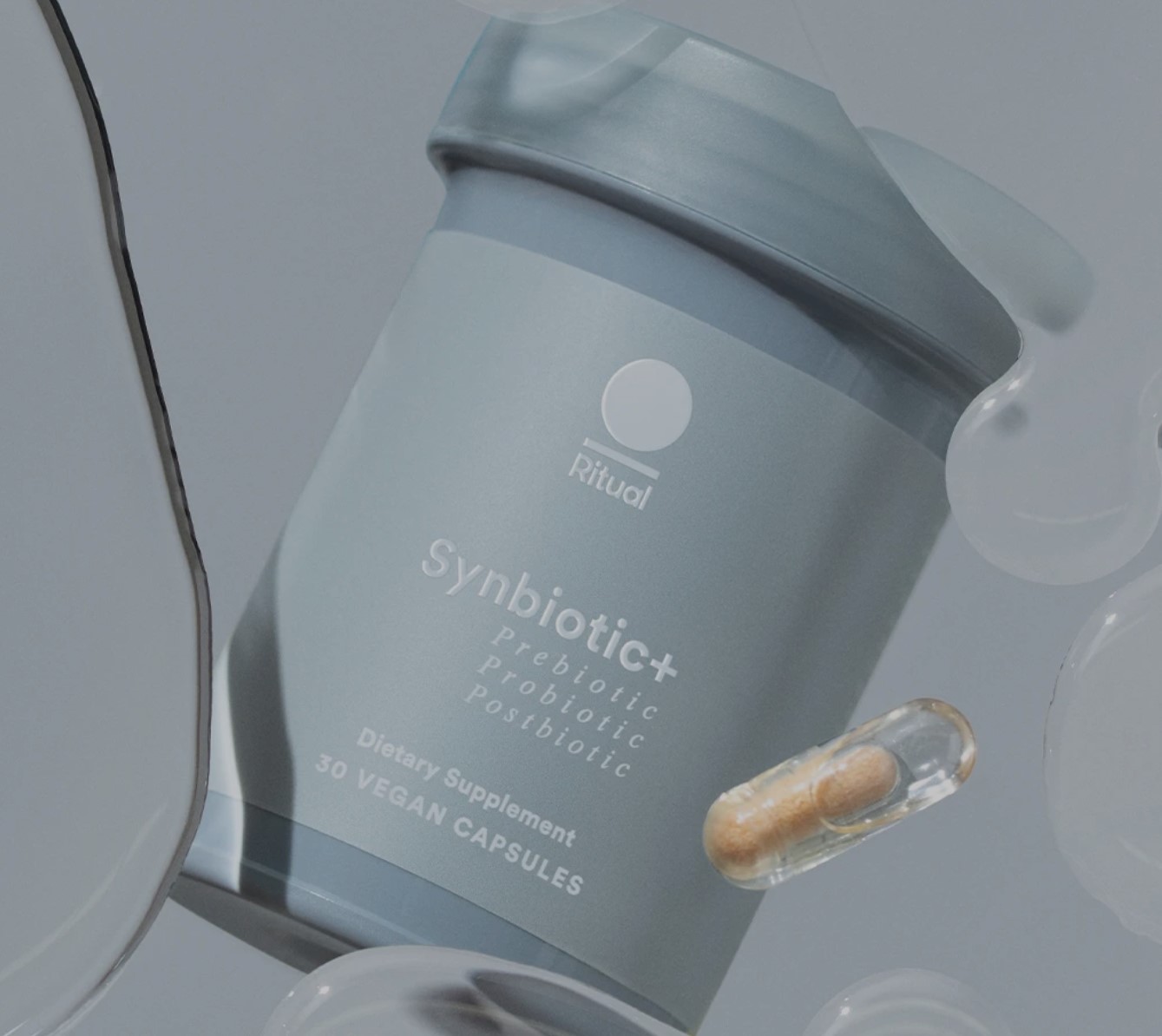
Product Highlights
- Filled with prebiotics, probiotics, and postbiotics
- Clinically studied
- Supports gut barrier function
- Delayed-release capsule designed so bacteria reaches the colon
Pros & Cons
Pros
- Traceable ingredients
- Supports gut lining and gut barrier function
- Vegan
- Non-GMO
- Delayed-release capsule
Cons
- Expensive
- Automatically signs you up for subscription
- There can be uncomfortable side effects at first
Bottom Line
The Ritual Synbiotic+ is a clinically backed probiotic with clean, traceable ingredients designed to support overall digestive health.
Seed DS-01 Daily Synbiotic
Seed DS-01 Daily Synbiotic
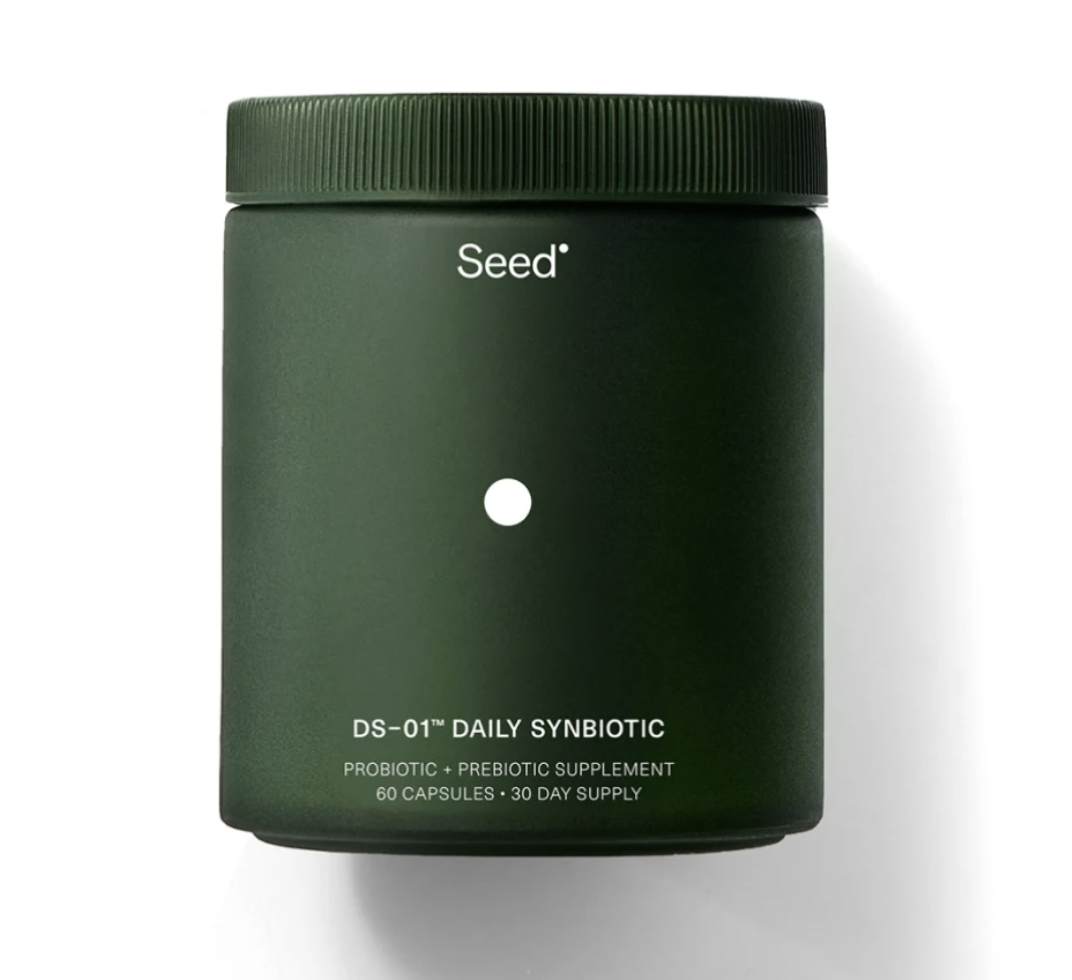
Product Highlights
- Contains both probiotics and prebiotics
- Capsule design features two layers of protection
- 24 active strains
- 53.6 billion AFU
- Allergen-friendly
Pros & Cons
Pros
- Contains both prebiotics and probiotics
- 2-layer capsule to protect probiotics
- Contains 24 active strains
- 53.6 billion AFU
Cons
- Expensive
- Some users report an upset stomach
Bottom Line
Seed Daily Synbiotic is a two-in-one capsule that contains both probiotics and prebiotic fibers. The capsule features two layers, designed to protect the active probiotics from harsh environments. It contains a wider variety of probiotics than many other brands, but is an expensive product.
Medical disclaimer: This article is intended for educational and informational purposes only. It is not intended as a substitute for medical advice. For health advice, contact a licensed healthcare provider. GGR also recommends choosing a product that has been third-party tested for quality.
Comparison Chart: Ritual Synbiotic vs Seed
| Ritual Synbiotic | Seed Synbiotic | |
| Price per serving | $1.80 | $1.67 |
| Serving size | 1 capsule | 2 capsules |
| Servings per container | 30 servings | 30 servings |
| Notable ingredients | Pre-, pro-, and postbiotics | Pre- and probiotics |
| Third-party tested | Yes | Yes |
Quick Look: Ritual Synbiotic vs Seed
Before diving into the specifics of Seed vs Ritual, let’s quickly unpack what synbiotics are. Synbiotics blend prebiotics, probiotics, and sometimes postbiotics1. Prebiotics2 are fibers that fuel the beneficial bacteria in the gut (probiotics3), while postbiotics are the byproducts these probiotics produce as they break down prebiotics3.
When picking a synbiotic, there are some key factors to consider. The probiotic strains are critical, as their effectiveness is highly strain-specific4 and depends on the targeted condition. You’ll also want to check the number of probiotics per serving, typically measured in colony-forming units (CFUs) or in some cases, active fluorescent units5 (AFUs), which may more accurately count living, active cells.
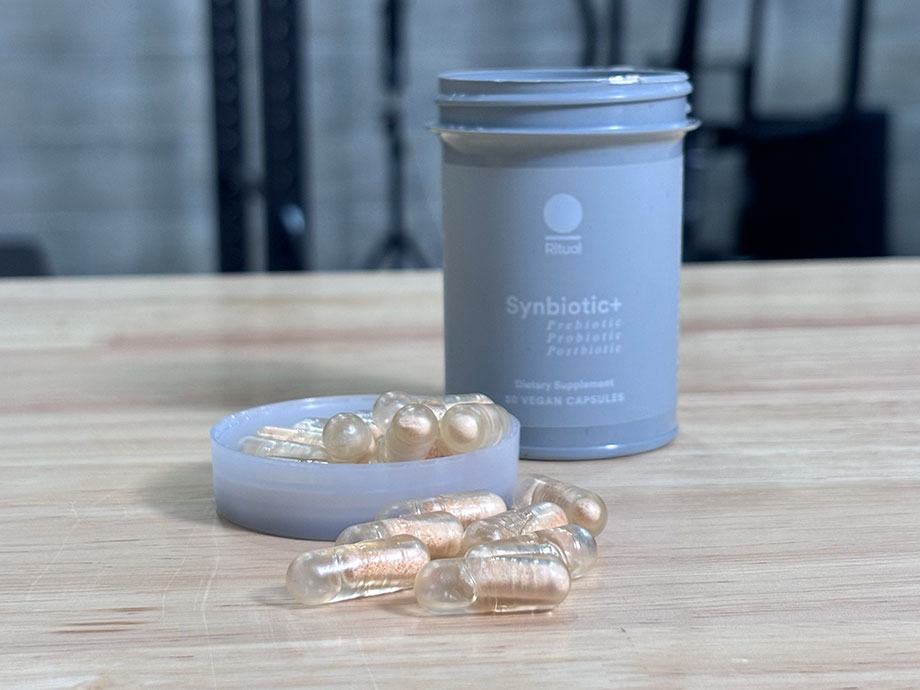
Ritual provides 11 billion CFUs from two strains geared toward gut and immune health, while Seed offers a hefty 53.6 billion AFUs spread across 24 strains for more comprehensive, whole-body support. That said, the International Probiotics Association6 highlights that the dosage (whether in CFUs or AFUs) must align with what research has shown to be effective for the desired benefits.
In our comparison, we also looked at prebiotic content, inclusion of postbiotics, cost, third-party testing, and customer support. Both brands deliver high-quality options, but their key differences can help you decide which is the right fit for you.
Who Should Buy Ritual Synbiotic
- Individuals seeking a 3-in-1 synbiotic for gut and immune system support
- Those who prefer the convenience of a single capsule
- People who don’t mind a minty taste
Who Should Buy Seed
- Those 18 years or older seeking a 2-in-1 synbiotic that targets whole-body health
- People who prioritize a wide variety of probiotic strains for more comprehensive gut health support
- Individuals who prefer sustainable practices, like refills in eco-friendly, recyclable packaging
Key Similarities Between Ritual Synbiotic vs Seed
- Contain pre- and probiotics to support a healthy gut microbiome and overall wellbeing
- Run on a subscription-based model with recurring deliveries, although you can purchase both on Amazon as a one-time purchase
- No refrigeration required
- Prioritize quality and transparency, undergoing rigorous third-party testing to verify purity, potency, and safety
- Gluten-free, vegan-friendly, free of common allergens, and non-GMO
- Employ capsule technology to enhance the survivability of the probiotics in the gut
- Offer detailed information about their ingredient sourcing, helping consumers trust the quality and origin of the components in their synbiotics
- 30-day money-back guarantee
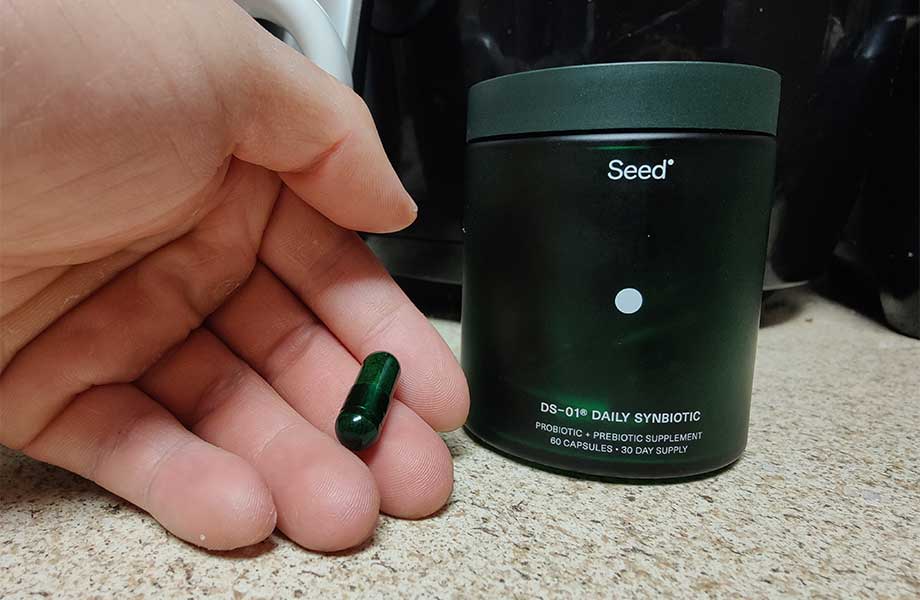
For an in-depth look at Ritual’s 3-in-1 formula, honest customer reviews, and more, check out our Ritual Synbiotic Review.
Important Differences Between Ritual Synbiotic vs Seed
Despite shared similarities, there are important differences between Seed and Ritual Synbiotics regarding their formulations (in greater detail in the next section), cost, and more.
Formulation
- Ritual: Provides pre-, pro-, and postbiotics
- Seed: Offers pre-and probiotic blends but does not include a postbiotic
Probiotic Strength and Diversity
- Ritual: Supplies 11 billion CFUs per serving from 2 probiotic strains with an emphasis on promoting regular bowel movements, protecting against occasional gastrointestinal discomforts, and supporting immune health
- Seed: Provides 53.6 billion AFUs per serving from 24 probiotic strains to support healthy digestion, gut barrier function, and overall immune, heart, and skin health—none of which are in Ritual’s formula
Dose
- Ritual: 1 capsule daily
- Seed: 2 capsules daily
Packaging
- Ritual: Bottles are not recyclable curbside, but Ritual claims they’re taking proactive measures to find solutions, such as partnering with programs like Pact Collective for take-back initiatives
- Seed: The first order comes with a refillable glass jar, and subsequent monthly orders come as eco-friendly refills
Cost
- Ritual: $54 for a one-month supply, providing 30 servings at $1.80 per serving
- Seed: $49.99 for a one-month supply, providing 30 servings at $1.67 per serving, with cost savings if you purchase 3- or 6-month supplies
Formulation
When comparing the formulations of Ritual and Seed Daily Synbiotics, it’s important to understand the key differences before deciding which is worth your investment. Here’s a simple yet thorough look at their main ingredients and standout features to help you make an informed choice.
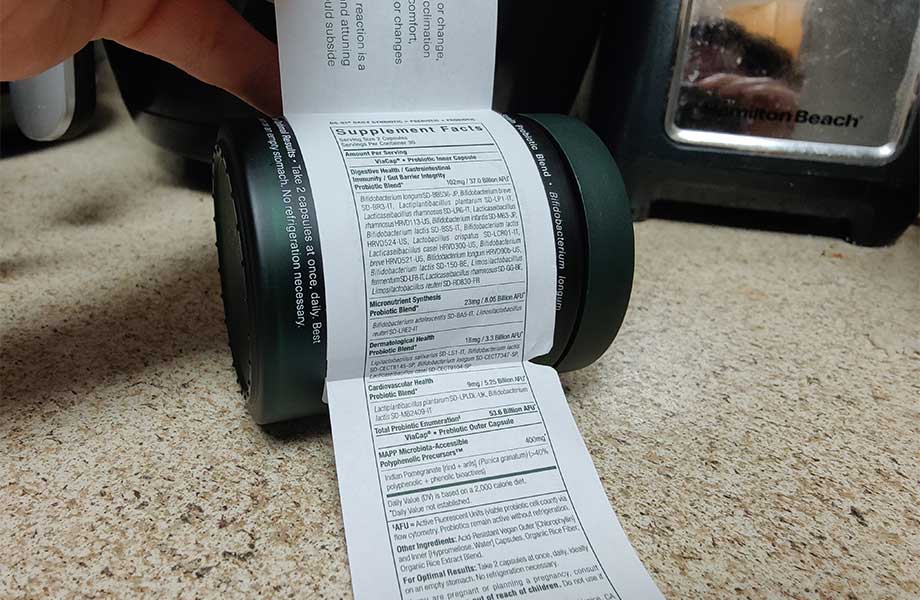
Seed Daily Synbiotic
Seed offers a two-in-one capsule design: an outer prebiotic capsule and an inner probiotic capsule containing 24 strains split into four blends. Let’s break it down.
Prebiotic
The outer capsule contains 400 milligrams of Indian pomegranate7 packed with antioxidants, fiber, and pectin8. Emerging research9 indicates that pomegranate may act as a prebiotic, supporting probiotics by protecting them as they journey through your gastrointestinal system.
Probiotics
The inner Seed probiotic shell houses 53.6 billion AFUs from 24 probiotic strains across four specialized blends:
- Digestive Health, Gut Immunity, and Gut Barrier Integrity Probiotic Blend: 37.0 billion AFUs with 16 strains:
- Bifidobacterium longum SD-BB536-JP, Bifidobacterium breve SD-BR3-IT, Lactiplantibacillus plantarum SD-LP1-IT, Lacticaseibacillus rhamnosus SD-LR6-IT, Lacticaseibacillus rhamnosus HRVD113-US, Bifidobacterium infantis SD-M63-JP, Bifidobacterium lactis SD-BS5-IT, Bifidobacterium lactis HRVD524-US, Lactobacillus crispatus SD-LCR01-IT, Lacticaseibacillus casei HRVD300-US, Bifidobacterium breve HRVD521-US, Bifidobacterium longum HRVD90b-US, Bifidobacterium lactis SD150-BE, Limosilactobacillus fermentum SD-LF8-IT, Lacticaseibacillus rhamnosus SD-GG-BE, Limosilactobacillus reuteri RD830-FR
- Dermatological Health Probiotic Blend: 3.30 billion AFUs with 4 strains:
- Ligilactobacillus salivarius SD-LS1-IT, Bifidobacterium lactis SD-CECT8145-SP, Bifidobacterium longum SD-CECT7347-SP, Lacticaseibacillus casei SD-CECT9104-SP
- Cardiovascular Health Probiotic Blend: 5.25 billion AFUs with 2 strains:
- Lactiplantibacillus plantarum SD-LPLDL-UK, Bifidobacterium lactis SD-MB2409-IT
- Micronutrient Synthesis Probiotic Blend: 8.05 Billion AFUs with 2 strains:
- Bifidobacterium adolescentis SD-BA5-IT, Limosilactobacillus reuteri SD-LRE2-IT
While we won’t cover every different strain, some of Seed’s probiotics have research backing their claims, like Bifidobacterium longum10 for skin and gut health and Lactobacillus plantarum11 for heart support.
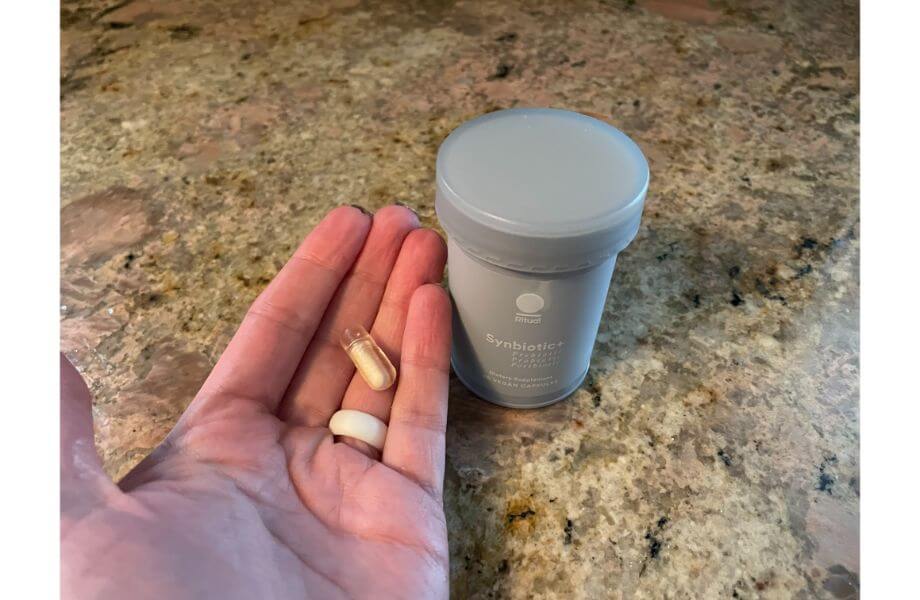
But remember—reaping the health benefits of probiotics requires adequate doses of each strain. While Seed lists active fluorescent units for their blends, these are proprietary formulas, leaving us to guess how much of each specific strain is provided.
ViaCap® Capsule
Seed uses its innovative ViaCap® technology to shield the probiotics from stomach acid, digestive enzymes, and bile salts so they can reach the colon (large intestine) and thrive. While Seed funded the research12 supporting ViaCap, it’s a reassuring sign that they take testing seriously and go the extra mile to verify product efficacy.
Ritual Synbiotic
Ritual’s synbiotic provides pre-, pro-, and postbiotics, all encapsulated in a minty, delayed-release capsule. Let’s take a closer look at what each component offers.
Prebiotic
Ritual supplies 15 milligrams of PreforPro13, a patented prebiotic that boosts a variety of probiotics—like Lactobacillus and Bifidobacterium—in their powerful synbiotic blend.
Probiotics
Ritual delivers 11 billion CFUs from two clinically-backed probiotic strains: Lactobacillus rhamnosus14 (LGG®) and Bifidobacterium animalis ssp. lactis15 (BB-12®). These live microorganisms support digestive and immune health, potentially benefiting digestive issues like diarrhea, constipation, and irritable bowel syndrome16 (IBS).
Postbiotic
Tributyrin17, a postbiotic, converts into butyrate—a short-chain fatty acid known to support gut health, boost immune function, and reduce inflammation. With 300 milligrams per serving, this dose mirrors amounts used in clinical research, including a 2021 pilot study18.
Delayed-Release Capsule
Ritual’s minty, delayed-release capsule helps the synbiotic blend make it through stomach acid unharmed, arriving at the colon where probiotics are most effective.
Company Policies
While Ritual and Seed share a few similarities in their policies, some notable differences set them apart:
- Return policies: Both brands offer a 30-day return policy, but only for first-time orders.
- Savings opportunities: Ritual gives new customers 20% off and offers discounts for bundling other supplements. Seed, however, focuses on loyal customers, providing 10% off a 3-month supply and 15% off a 6-month supply.
- Shipping locations: Ritual ships to the U.S., UK, and Canada, while Seed casts a wider net, delivering to parts of Asia, the UK, the U.S., Europe, North America, Australia/Oceania, and South America—with Africa soon to be included.
- Shipping costs: Ritual scores points with free shipping on all orders. Seed ships free within the U.S., but international orders come with a $10 flat fee.
Ritual Synbiotic vs Seed: Final Thoughts
While both Ritual and Seed Synbiotics share some overlap, there are a few key differences worth noting. Here’s a rundown to help you decide if one (or neither) is right for you:
- Formulation: Seed packs a punch with 53.6 billion AFUs from 24 probiotic strains, supporting everything from heart to skin to gut health. Ritual provides 11 billion CFUs and keeps it simple with two strains focused on gut balance and immune health—but it’s the only one offering postbiotics alongside prebiotics.
- Capsule innovation: Both brands use innovative capsules to ensure the probiotics make it past your stomach and into your colon, where they best survive and thrive.
- Dosage: Seed requires two daily capsules, while Ritual requires just one minty capsule daily.
- Subscription: Both operate on subscription models, but Seed sweetens the deal if you commit to 3 or 6 months at a time.
- Storage: No refrigeration is required for either.
- Transparency: Both are transparent about their ingredient sourcing and undergo third-party testing.
- Sustainability: Although Ritual aims to reduce its carbon footprint, its bottles aren’t recyclable like Seed’s glass jar and compostable monthly refill pouches.
Ritual Synbiotic vs Seed: FAQs
What is better, Ritual or Seed?
Whether Ritual or Seed is better depends on individual health needs, as each offers unique benefits. Seed contains 24 probiotic strains, making it a more comprehensive option that supports various health aspects such as heart, skin, and gut health—almost like a multivitamin for overall wellness. In contrast, Ritual focuses on two probiotic strains to promote a balanced gut microbiota and support immune health.
To determine which is right for you, consult a healthcare professional who can guide you based on your specific goals and needs.
Which probiotic is comparable to Seed?
Ritual stands out as the closest comparison to Seed. Like Seed, it’s a synbiotic, combining probiotics and prebiotics to enhance probiotic survival and maximize health benefits.
What are the side effects of ritual synbiotics?
Ritual notes that you may initially encounter mild side effects like gas, bloating, or stomach rumbling. However, probiotic side effects should subside as your body adjusts with continued use.
Are synbiotics better than probiotics?
While evidence on synbiotics is still developing, some research suggests they may offer greater benefits than probiotics or prebiotics alone3.
These statements have not been evaluated by the Food and Drug Administration. This product is not intended to diagnose, treat, cure, or prevent any diseases.
References
- Li, H. Y., Zhou, D. D., Gan, R. Y., Huang, S. Y., Zhao, C. N., Shang, A., Xu, X. Y., & Li, H. B. (2021). Effects and Mechanisms of Probiotics, Prebiotics, Synbiotics, and Postbiotics on Metabolic Diseases Targeting Gut Microbiota: A Narrative Review. Nutrients, 13(9), 3211. https://doi.org/10.3390/nu13093211
- Slavin J. (2013). Fiber and prebiotics: mechanisms and health benefits. Nutrients, 5(4), 1417–1435. https://doi.org/10.3390/nu5041417
- Martyniak, A., Medyńska-Przęczek, A., Wędrychowicz, A., Skoczeń, S., & Tomasik, P. J. (2021). Prebiotics, Probiotics, Synbiotics, Paraprobiotics and Postbiotic Compounds in IBD. Biomolecules, 11(12), 1903. https://doi.org/10.3390/biom11121903
- McFarland, L. V., Evans, C. T., & Goldstein, E. J. C. (2018). Strain-Specificity and Disease-Specificity of Probiotic Efficacy: A Systematic Review and Meta-Analysis. Frontiers in Medicine, 5, 124. https://doi.org/10.3389/fmed.2018.00124
- Boyte, M. E., Benkowski, A., Pane, M., & Shehata, H. R. (2023). Probiotic and postbiotic analytical methods: a perspective of available enumeration techniques. Frontiers in Microbiology, 14, 1304621. https://doi.org/10.3389/fmicb.2023.1304621
- Probiotic Supplements: What is an Adequate Dosage? (2021, May 25). https://internationalprobiotics.org/home/probiotic-dosage-what-is-adequate/
- Eghbali, S., Askari, S. F., Avan, R., & Sahebkar, A. (2021). Therapeutic Effects of Punica granatum (Pomegranate): An Updated Review of Clinical Trials. Journal of Nutrition and Metabolism, 2021, 5297162. https://doi.org/10.1155/2021/5297162
- Larsen, N., Cahú, T. B., Isay Saad, S. M., Blennow, A., & Jespersen, L. (2018). The effect of pectins on survival of probiotic Lactobacillus spp. in gastrointestinal juices is related to their structure and physical properties. Food Microbiology, 74, 11–20. https://doi.org/10.1016/j.fm.2018.02.015
- O’Flaherty, S., Cobian, N., & Barrangou, R. (2023). Impact of Pomegranate on Probiotic Growth, Viability, Transcriptome and Metabolism. Microorganisms, 11(2), 404. https://doi.org/10.3390/microorganisms11020404
- Mills, S., Yang, B., Smith, G. J., Stanton, C., & Ross, R. P. (2023). Efficacy of Bifidobacterium longum alone or in multi-strain probiotic formulations during early life and beyond. Gut Microbes, 15(1), 2186098. https://doi.org/10.1080/19490976.2023.2186098
- Neverovskyi, A., Chernyavskyi, V., Shypulin, V., Hvozdetska, L., Tishchenko, V., Nechypurenko, T., & Mikhn Ova, N. (2021). Probiotic Lactobacillus plantarum may reduce cardiovascular risk: An experimental study. ARYA Atherosclerosis, 17(4), 1–10. https://doi.org/10.22122/arya.v17i0.2156
- Bron, P. A., Catalayud, M., Marzorati, M., Pane, M., Kartal, E., Dhir, R., & Reid, G. (2021). Delivery of Metabolically Neuroactive Probiotics to the Human Gut. International Journal of Molecular Sciences, 22(17), 9122. https://doi.org/10.3390/ijms22179122
- Grubb, D. S., Wrigley, S. D., Freedman, K. E., Wei, Y., Vazquez, A. R., Trotter, R. E., Wallace, T. C., Johnson, S. A., & Weir, T. L. (2020). PHAGE-2 Study: Supplemental Bacteriophages Extend Bifidobacterium animalis subsp. lactis BL04 Benefits on Gut Health and Microbiota in Healthy Adults. Nutrients, 12(8), 2474. https://doi.org/10.3390/nu12082474
- Capurso, L. (2019). Thirty Years of Lactobacillus rhamnosus GG: A Review. Journal of Clinical Gastroenterology, 53 Suppl 1, S1–S41. https://doi.org/10.1097/MCG.0000000000001170
- Jungersen, M., Wind, A., Johansen, E., Christensen, J. E., Stuer-Lauridsen, B., & Eskesen, D. (2014). The Science behind the Probiotic Strain Bifidobacterium animalis subsp. lactis BB-12(®). Microorganisms, 2(2), 92–110. https://doi.org/10.3390/microorganisms2020092
- Ceccherini, C., Daniotti, S., Bearzi, C., & Re, I. (2022). Evaluating the Efficacy of Probiotics in IBS Treatment Using a Systematic Review of Clinical Trials and Multi-Criteria Decision Analysis. Nutrients, 14(13), 2689. https://doi.org/10.3390/nu14132689
- Yang, N., Lan, T., Han, Y., Zhao, H., Wang, C., Xu, Z., Chen, Z., Tao, M., Li, H., Song, Y., & Ma, X. (2023). Tributyrin alleviates gut microbiota dysbiosis to repair intestinal damage in antibiotic-treated mice. PloS One, 18(7), e0289364. https://doi.org/10.1371/journal.pone.0289364
- Grosicki, G. (2021). Effects of 3-week Tributyrin Supplementation on the Gut Microbiome: A Pilot Study. Journal of the Academy of Nutrition and Dietetics, 121(9), A23. https://doi.org/10.1016/j.jand.2021.06.051



